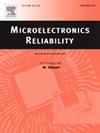Assessment of the solidification behavior and microhardness of Sb-modified Sn-Ag alloys
IF 1.6
4区 工程技术
Q3 ENGINEERING, ELECTRICAL & ELECTRONIC
引用次数: 0
Abstract
The present study aims to analyze the effect of antimony (Sb) additions (0.2 % and 2.0 % in wt.%) on the microstructure solidification parameters (cooling rate and growth rate), temperatures related to phase transformation, macrosegregation and microhardness of the Sn-2.0 wt% Ag alloy. The samples have been characterized using techniques such as Optical Microscopy (OM), Scanning Electron Microscopy (SEM), X-ray Fluorescence (XRF), X-ray Diffraction (XRD) and Vickers microhardness. Thermodynamic calculations were also performed in order to study the evolution of the solidification and the phase fractions. The microstructures of the Sn-Ag-Sb alloys are completely dendritic with a Sn-rich matrix (β-Sn) surrounded by a eutectic mixture, β-Sn + Ag3Sn. The additions of Sb promoted a slight microstructural refinement and a slight increase in liquidus and solidus temperatures, when compared to the binary alloy. Ag3Sn intermetallics showed fibrous and spherical morphologies, with spherical dominating at cooling rate ṪL > 5.1 °C/s and ṪL > 2.9 °C/s for 0.2 wt.% Sb and 2.0 wt.% Sb, respectively. The Sb increased Vickers microhardness, particularly in the Sn-Ag-2wt.%Sb alloy due to solid-solution and dendritic refinement strengthening.
求助全文
约1分钟内获得全文
求助全文
来源期刊

Microelectronics Reliability
工程技术-工程:电子与电气
CiteScore
3.30
自引率
12.50%
发文量
342
审稿时长
68 days
期刊介绍:
Microelectronics Reliability, is dedicated to disseminating the latest research results and related information on the reliability of microelectronic devices, circuits and systems, from materials, process and manufacturing, to design, testing and operation. The coverage of the journal includes the following topics: measurement, understanding and analysis; evaluation and prediction; modelling and simulation; methodologies and mitigation. Papers which combine reliability with other important areas of microelectronics engineering, such as design, fabrication, integration, testing, and field operation will also be welcome, and practical papers reporting case studies in the field and specific application domains are particularly encouraged.
Most accepted papers will be published as Research Papers, describing significant advances and completed work. Papers reviewing important developing topics of general interest may be accepted for publication as Review Papers. Urgent communications of a more preliminary nature and short reports on completed practical work of current interest may be considered for publication as Research Notes. All contributions are subject to peer review by leading experts in the field.
 求助内容:
求助内容: 应助结果提醒方式:
应助结果提醒方式:


